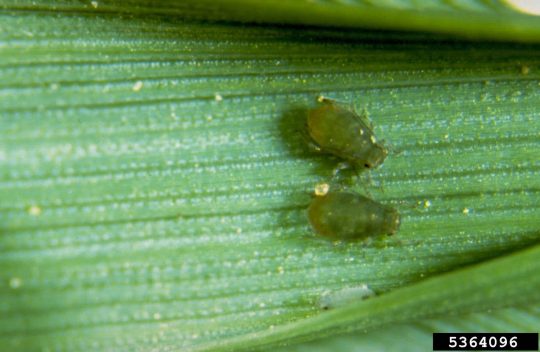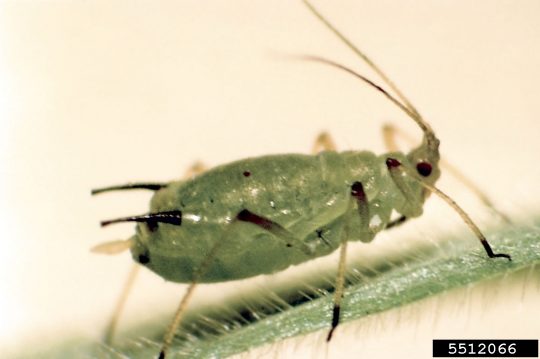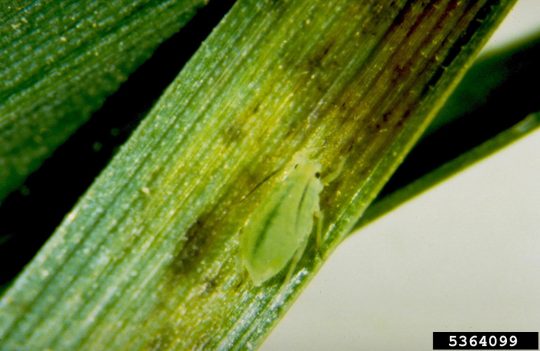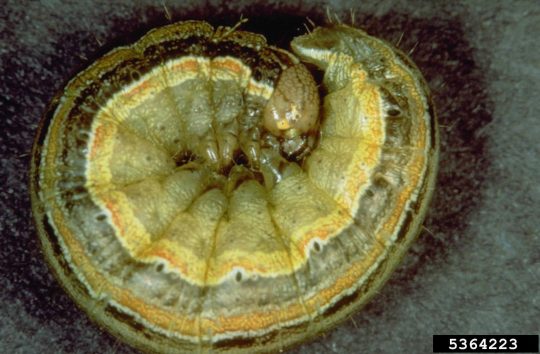Wheat Insects – What to Watch for This Spring
Consider adding some insect scouting to your wheat management routine this spring if you are not doing so already. While damaging insect pest infestations are pretty sporadic in Illinois, missing one can be costly. The first step in managing these infestations is knowing what to look for.
Aphids
There are several species of aphids that infest wheat in Illinois, and they can be difficult to tell apart without careful examination (the figure captions below provide some tips on how to identify the different species; note that aphids are tiny insects, and you will probably need a hand lens to distinguish them). The primary concern with aphids is their ability to transmit barley yellow dwarf virus (BYDV); however, high populations of aphids feeding on plants can reduce vigor, lead to wilting, and coat the plants in sticky “honeydew” and sooty mold. In addition, greenbug feeding introduces a toxin that can reduce yield through stunting of the plants.



Armyworm
Armyworms are a sporadic issue in wheat in Illinois, but under high pressure they can cause substantial damage. The species we see in the spring is often called the “true” armyworm to distinguish it from fall armyworm (which, as the name suggests, arrives later in the season) and several other species. The true armyworm caterpillar has a broad, lighter-colored stripe on either side of the body, a net-like pattern on its head, and dark bands on each proleg. Armyworms feed on leaves, resulting in a raggedy appearance. Leaf feeding itself generally does not have much of an impact unless it is severe. However, occasionally armyworm larvae clip seed heads when leaf material becomes scarce, and this can result in serious yield losses.

(Just a note: the images in this article are used under the terms of a Creative Commons Attribution License, and were obtained through www.ipmimages.org, which is an excellent insect identification resource).
Keep watching the Bulletin for seasonal updates if and when we start to see issues pop up. Until then, happy scouting!
Author: Nick Seiter, Research Assistant Professor, Field Crop Entomology
nseiter@illinois.edu | 217.300.7199





